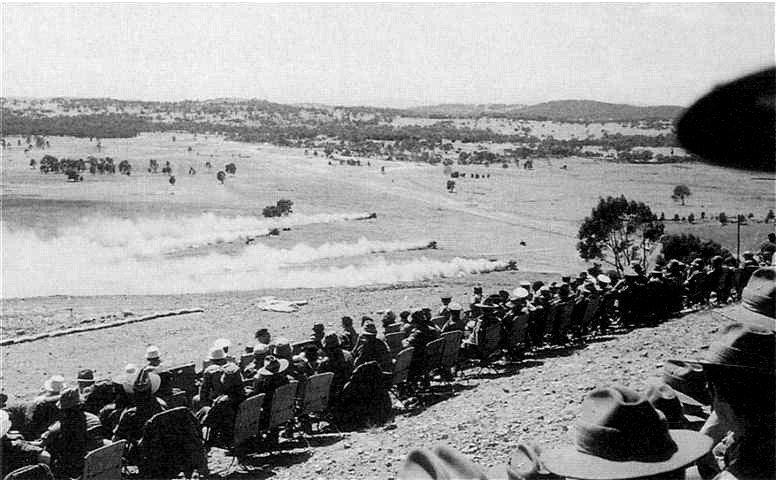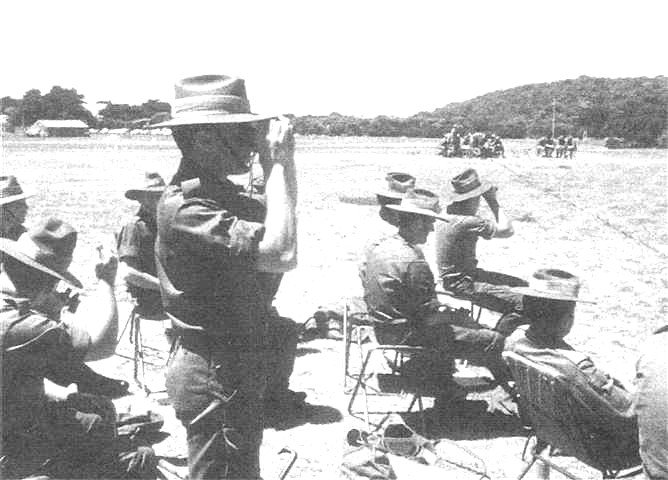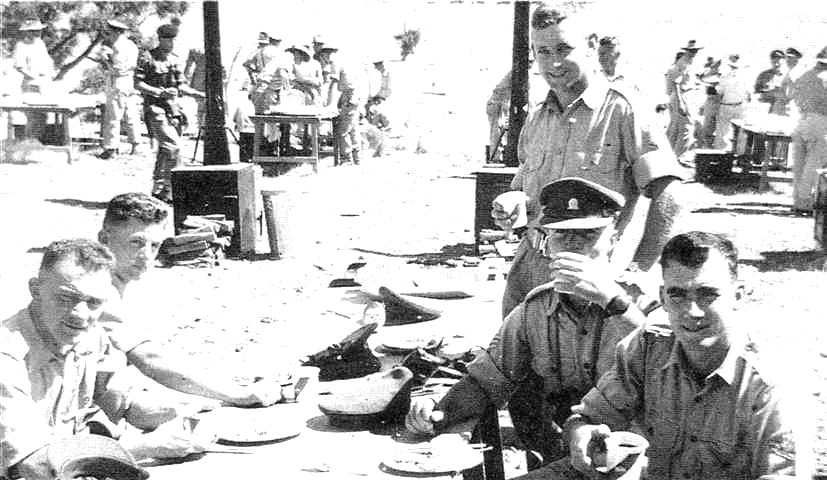Field Training



Demonstration
Puckapunyal 1981
Puckapunyal was a noted locale for demonstrations. In the 1950s, wartime carryover stocks of 25 pr and 4.2 inch mortar ammunition enabled 3rd Division to lavish some of it on annual firepower divisional shoots of its three field regiments and light regiment. In later years, as the equipment of the services improved, OCS was able to take the benefit of a wide range of armoured, infantry, artillery and air firepower displays.
With the introduction of new weapons of different calibre, new ammunition had to be procured and the costs borne by annual defence budgets, resulting in more economical demonstrations, the idea of a giant annual one for all colleges foundering on the difficulty of coordinating programmes.
Photo: D.N. Thornton
Mortar fire direction
Jarman Field 1984
The training programme included direction of fire support weapons – tanks, artillery and mortars. The first was undertaken at Puckapunyal with 1st Armoured Regiment, initially with Centurion then Leopard tanks; the second was either at Puckapunyal with a 3rd Division CMF regiment or a regular battery at Green Hills near Sydney. Mortar training was similarly undertaken with a CMF or regular unit on the demonstration tour of the time.
As a simple economy measure, subcalibre devices were used for initial local training, providing a similar pattern of fire sufficient to practise direction and without the need to travel afield. Observing fire are M.H. Cooper, A.W. Brunton, D.W. Caldwell, R.J. Dempster, G.D. Faulkhead.
Photo: D. W. Caldwell
Eating in the field
Puckapunyal 1959
Some vestiges of civilisation were maintained during demonstrations and weapons practices, A. Nicholson, R.M. Kelly, D.J. McLachlan, M.G. Holton, N.W. Spencer eating off field service tables and forms as an impromptu mess. Cooking by Fowler stove, an effective if primitive field cooker, was a little ahead of the World War 1 trench fires.
For field training the Wiles mobile trailer-mounted kitchen was able to provide adequately cooked meals, and these two old but effective equipments remained until replaced by the gasoline-fuelled American cookers.
Photo: D.J. McLachlan


